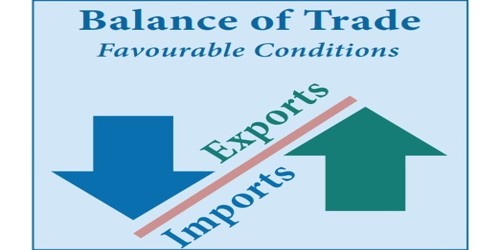
Understanding the psychology behind spending is crucial for effective wealth management. Our financial behaviors are often deeply rooted in psychological triggers, emotions, and societal influences that lead us to develop certain money habits, both good and bad. By gaining insight into these behaviors, we can take proactive steps to break bad money habits and cultivate healthier spending patterns.
1. Understanding the Psychology of Spending
1.1 Emotional Triggers and Spending
Emotions play a significant role in our spending habits. Many people turn to shopping or spending in response to different emotional states, such as stress, anxiety, or sadness. For instance, retail therapy—the act of buying things to improve one’s mood—is a common phenomenon that can lead to excessive spending and the accumulation of debt. Recognizing the emotional triggers that lead to impulsive purchases is the first step in addressing bad spending habits.
1.2 The Role of Social Influence
Social factors heavily influence our spending behaviors. We often feel pressure to conform to societal standards, which can drive us to make purchases that do not align with our values or financial goals. This concept, known as social comparison, prompts individuals to compare themselves with others, leading to overspending in an attempt to keep up with peers or maintain a certain image. Understanding how social influences shape spending habits can help individuals make more conscious purchasing decisions.
1.3 Behavioral Economics and Spending Habits
Behavioral economics examines the psychological, emotional, and social factors that influence economic decisions. It highlights how cognitive biases, such as loss aversion (the tendency to prefer avoiding losses over acquiring equivalent gains), can impact our spending behaviors. For instance, individuals may be more likely to indulge in spending to avoid feelings of regret or loss. By understanding these cognitive biases, individuals can better navigate their financial decision-making processes.
2. Identifying Bad Money Habits

To break bad money habits, it is essential first to identify them. Here are some common bad money habits that can hinder effective wealth management:
2.1 Impulse Buying
Impulse buying refers to unplanned purchases made on a whim, often driven by emotions or environmental triggers. This habit is fueled by marketing tactics that create a sense of urgency or excitement, leading individuals to buy items they do not need. Breaking this habit requires awareness and a proactive approach to making purchasing decisions.
2.2 Living Beyond Your Means
Many individuals struggle with living beyond their means, where expenses exceed income. This can lead to debt accumulation and long-term financial instability. Identifying the root causes of overspending, such as lifestyle inflation or pressure to maintain a certain image, is crucial in addressing this habit.
2.3 Not Tracking Your Spending
Failing to track spending can lead to a lack of awareness about financial habits. Without monitoring expenses, individuals may continue to overspend without realizing it. Establishing a system for tracking spending is essential for building financial awareness and making informed decisions.
2.4 FOMO: Fear of Missing Out
FOMO drives individuals to engage in spending behaviors to avoid feeling left out or missing out on experiences. This mindset can lead to overspending on social activities or luxury items to keep up with friends or societal trends. Recognizing FOMO as a trigger for spending can help individuals make more rational financial choices.
3. The Impact of Bad Money Habits on Wealth Management
Bad money habits can significantly affect overall wealth management, leading to several negative outcomes.
3.1 Accumulation of Debt
The most immediate consequence of bad money habits is the accumulation of debt. Whether through credit card debt or personal loans, overspending can lead to worsening financial situations, making it difficult to achieve long-term financial goals.
3.2 Stress and Mental Health
Financial stress is a leading cause of anxiety and depression. The weight of poor financial decisions and mounting debt can take a toll on mental health. Breaking bad money habits can alleviate these pressures and lead to increased well-being.
3.3 Hindrance to Financial Goals
Bad money habits hinder progress toward financial goals, such as saving for retirement, purchasing a home, or creating an emergency fund. Without prioritizing good financial behaviors, individuals may find it challenging to build wealth and achieve their aspirations.
4. Strategies for Breaking Bad Money Habits

Making intentional changes to spending habits requires dedication and a strategic approach. Here are some practical strategies for breaking bad money habits:
4.1 Increase Financial Awareness
Becoming more aware of your financial situation is a crucial step toward breaking bad habits. This can be achieved through:
- Keeping a detailed record of income and expenses.
- Reviewing bank statements and credit card statements regularly.
- Setting aside time each week to assess your financial progress.
4.2 Establish a Budget
Creating a budget helps establish clear spending limits and priorities. A budget outlines essential expenses, discretionary spending, and savings goals, enabling individuals to make informed financial decisions.
- Start by documenting all income sources and fixed expenses.
- Allocate funds to various categories, ensuring that savings and debt repayment are included.
4.3 Implement the 30-Day Rule
The 30-day rule is a technique that encourages individuals to wait thirty days before making a significant purchase. This allows time to assess whether the purchase is necessary or aligns with financial goals. If the desire to purchase persists after thirty days, the individual may then reconsider moving forward with the purchase.
4.4 Identify Triggers and Create Strategies
Understanding the triggers that lead to bad spending habits can empower individuals to develop strategies to counteract them. Consider the following steps:
- Identify situations or emotions that prompt impulsive spending.
- Create alternative coping strategies, such as engaging in hobbies, exercising, or seeking social support instead of shopping.
4.5 Use Positive Reinforcement
Positive reinforcement reinforces good financial behaviors. Celebrate small achievements, such as staying within budget or making a significant payment toward debt. Rewards can include treating yourself to a small indulgence that aligns with your budget, motivating you to continue on the right path.
5. Building Good Money Habits
Once bad money habits are addressed, it is essential to cultivate good financial behaviors that promote long-term success.
5.1 Set Clear Financial Goals
Establishing clear financial goals provides direction and motivation. Determine short-term and long-term goals, such as:
- Paying off credit card debt.
- Saving for a vacation or major purchase.
- Building a retirement fund.
Set specific, measurable, and time-bound goals to increase accountability and focus.
5.2 Create an Emergency Fund
An emergency fund serves as a safety net for unexpected expenses, reducing the likelihood of turning to credit cards or loans in times of need. Aim to save three to six months’ worth of living expenses in an accessible account, such as a high-yield savings account.
5.3 Automate Savings and Payments
Automation makes saving and debt repayment easier by removing the need for conscious decision-making. Set up automatic transfers to savings accounts and automate bill payments to ensure they are made on time. This reduces the risk of overspending and helps build savings consistently.
5.4 Educate Yourself About Personal Finance
Investing time in personal finance education can provide individuals with the knowledge needed to make informed financial decisions. Consider reading books, attending workshops, or following reputable financial blogs and podcasts. Improving financial literacy can empower individuals to make sound choices and break bad spending habits.
6. The Role of Mindset in Financial Success

Mindset plays a pivotal role in shaping financial behaviors. Adopting a positive and growth-oriented mindset can enhance the journey toward financial wellness.
6.1 Develop a Growth Mindset
A growth mindset fosters the belief that skills and abilities can be developed through dedication and effort. Embrace setbacks as opportunities for learning and growth, rather than viewing them as failures. This perspective can enhance resilience in navigating financial challenges.
6.2 Practice Gratitude
Gratitude can shift focus from what you lack to what you have, reducing the desire for unnecessary spending. Keep a gratitude journal to regularly acknowledge positive aspects of your life and appreciate non-material sources of happiness. This practice can help counteract feelings of inadequacy triggered by social comparison.
6.3 Visualize Financial Success
Visualization is a powerful tool for achieving financial goals. Create a vision board or write down your financial goals and the lifestyle you aspire to achieve. Regularly revisiting these visualizations can reinforce commitment to breaking bad money habits and achieving your desired outcomes.
7. Seeking Professional Help
Breaking bad money habits and achieving financial wellness can be challenging, and seeking professional help may provide valuable support.
7.1 Financial Advisors and Counselors
Financial advisors can offer personalized financial planning and guidance tailored to your situation. They can help create comprehensive plans to achieve financial goals while minimizing bad spending habits. A financial counselor can also provide valuable insights into budgeting and managing debt.
7.2 Support Groups and Workshops
Participating in support groups or financial workshops can foster accountability and provide additional resources. Engaging with others facing similar challenges can be a source of motivation and encouragement on the journey to better financial health.
8. Conclusion
The psychology of spending deeply influences our financial habits, often leading to the development of detrimental behaviors that hinder wealth management. By understanding the emotional triggers and social influences that shape our spending patterns, we can take proactive steps to break bad money habits and cultivate healthier financial behaviors.
Implementing strategies such as increasing financial awareness, establishing a budget, applying the 30-day rule, and building good money habits are crucial for long-term financial success. Mindset plays a significant role in this process, and adopting a growth-oriented approach can empower individuals on their journey to financial wellness.
Breaking bad money habits is not simply a financial endeavor; it is a holistic process that encompasses mindset, education, and proactive planning. As you embark on this journey, remember that small changes can lead to significant transformations. With dedication and the right strategies, you can break free from negative habits and build a more secure financial future.








